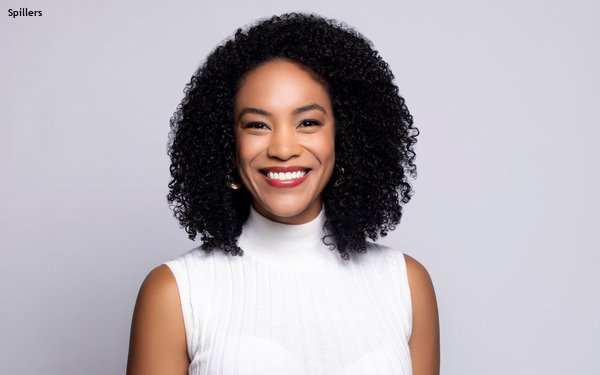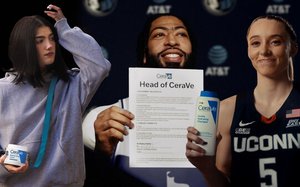
CeraVe is turning
20, and using that milestone to sharpen what’s driven its fast growth, doubling business in the last 10 years to hit $1 billion in sales and generating 1 billion TikTok views, all the while
balancing the brand between beauty buzz and affordable skin solutions.
The secret, according to Kelly Buchanan Spillers, global head of digital and social? A flexible but fiercely protective
approach to influencer collaboration. The company finds people already using its products, then gives them wide latitude to share their experiences, often without scripts or heavy-handed oversight.
But there are guardrails, including scientific accuracy, brand values, and a small team of social sleuths monitoring tone and timing. Spillers tells CPG Insider about the challenges in keeping
the work fresh, funny, and trustworthy.
This interview has been edited for length and clarity.
CPG Insider: In the era of SkinTok and BeautyTok, 20 is ancient. What do
you think has helped CeraVe go from drugstore brand to Gen Z obsession?
Kelly Buchanan Spillers: The
whole point of this anniversary is to celebrate all the people who helped us get here. We’ve been dedicated to skin barrier health from day pne and owe everything to the
dermatologists who have worked with us to develop our products and formulas. They’re what has allowed us to shift the conversation to science-backed skin health. But over the last seven to 10
years, we really need to thank our influencers for carrying the message for us. They help us provide more education and entertainment.
CPG Insider: And they generate incredible metrics
in terms of awareness and engagement. Lots of brands envy that and wish they could be “community-led,” too. What’s something other marketers often don’t get about this
approach?
Spillers: We've learned the hard way that it requires a lot of time to develop a great idea, and we can't be too precious about ideas. Our recent haircare launch, for
example—a mass category—needed to tie an insight we found online to multiple celebrities who could carry the message and then reach everyday consumers. Our team is an idea machine, and
we're constantly looking for opportunities to communicate to our consumers. One of the big misconceptions is that it takes ages to get good campaigns out, but we give our team enough autonomy to
partner with creators and move quickly.
We have an internal project team that has the ability to partner with creators that they find in the moment, with an open brief. We say, “Take our
products. Here's the message. Do what you want with it.” No red tape from the brand team. Just go. We're going to trust that you're going to represent our brand well, because we've seen how
you've done it with your audience. There are a handful of don’ts, but other than that, we’re trusting them to carry the message of our brand. This team knows social media and can move
quickly. Because they know the brand well enough, they can create magic in real time.
CPG Insider: What kind of people do you need to make that kind of team work well?
Spillers: It’s got to be well-rounded, with marketers and creative thinkers who are constantly coming up with ideas for long-term brand building and immediate creative execution on
social media and moments in between—ideas that help us move forward with retailers. Some have been in the industry a long time, and others haven’t—there’s lots of diverse
thinking. When you see the way we’ve exploded over the last couple of years, it's really because of this mix of creative thinking and the lack of red tape.

CPG Insider: Who helps make judgment calls about what’s working and what’s
not? Is there a vibe-check team internally?
Spillers: Yes, our advocacy and influencer team are constantly looking for mentions of our brand at all levels... We’ve kind of
constantly been defining our sense of humor and really had a moment with it, obviously, with our Michael CeraVe campaign. We recently introduced Sarah V, a new goat mascot, because so many fans told
us we were the GOAT. Fine, if you say we’re the GOAT, we’ll give you a GOAT.
The point isn’t just humor, though. Our earned-first strategy works because we find people who
are authentically skin barrier sufferers and already using our products, whether it's something that's quite commonplace, like acne or dandruff, or something you’d see a doctor about. We let
them carry the message—as long as the science is echoed in how they’re representing the brand.
CPG Insider: That Michael Cera campaign won you plenty of buzz, awards and
sales, and your "SNL" collab with Bowen Yang was hysterical, which makes me wonder about ideas you’ve rejected. How do you decide when something is stupid-funny versus just stupid?
Spillers: We don’t take ourselves too seriously, with the single exception of ensuring that the message of how effective our products are relates to skin barrier issues. We let influencers
speak to their audiences in the way that they know to be successful... We go with what we know works.
CPG Insider: What’s the biggest risk? What keeps you up at night?
Spillers: Burnout is a risk for any brand. And for us, a real risk is that people will no longer trust social media or understand what's real and what's not, especially with the rise of AI. Then
there are so many indie brands. And we think about the oversaturation of misinformation on the internet, which can lead to people not diagnosing themselves properly as it relates to their skin
conditions. And there is the risk that people will no longer believe in our being developed with dermatologists, and what that actually means.